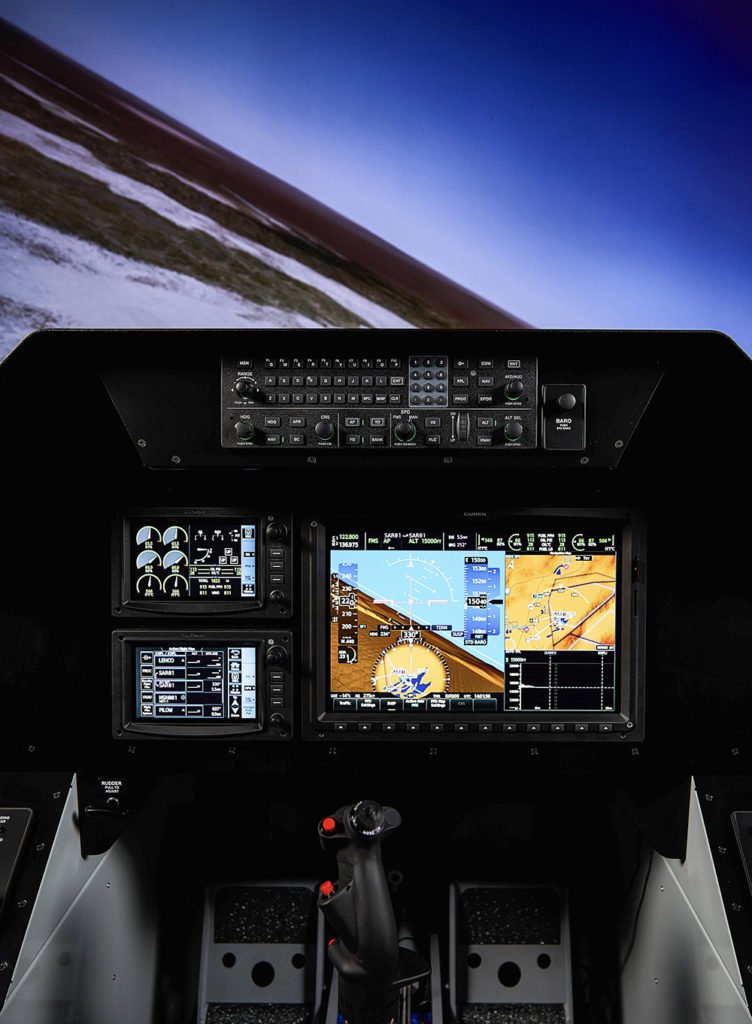Garmin Celebrates First Flight of G3000 in a Supersonic Tactical
Tactical Air Support, Inc. (Tactical Air) has completed the maiden flight of a Garmin integrated flight deck in a supersonic F-5 fighter aircraft. In just under six months, Tactical Air completed the engineering design, installation and first flight with the G3000 integrated flight deck and dual Garmin touchscreen controllers (GTCs). The G3000 in the F-5 is expected to be ready to perform adversary training for the U.S. Navy in Q2 2019. This commercial-off-the-shelf (COTS) Garmin solution allows Tactical Air to take advantage of reduced development time, lower life-cycle costs and reduced operational costs, through highly reliable state-of-the-art designs.
“The maiden flight of the G3000-equipped F-5 is a significant
achievement as it is a testament to the rapid implementation time and
flexibility afforded by a Garmin integrated flight deck,” said Carl Wolf, vice
president of aviation sales and marketing. “In just under six months, Tactical
Air was able to complete the engineering design, installation and achieve first
flight. Through their hard work, dedication and our strong relationship
together, we’re thrilled that they’re already in the air with the Garmin G3000
in this iconic aircraft. I am confident that the Tactical Air pilots will enjoy
flying behind Garmin glass.”

The F-5 is a
supersonic, multi-role tactical fighter and attack aircraft that in this role
will provide air-to-air combat training, close-air support training, tactics
development and evaluation support. The upgraded F-5 used by Tactical Air will be used in an aggressor
training role and the G3000 will transform the entire fleet of Tactical Air F-5’s
with sensor and system capabilities similar to current fighter aircraft.
“The first
flight of the F-5 was flawless and achieved the main objective of verifying
Pilot Vehicle Interface (PVI) of aircraft systems, displays, controls and the
new Caution/Advisory System (CAS). The PVI and CAS, when combined with the
G3000, results in a more capable fighter aircraft,” said Ken Hamm, Tactical Air
chief test pilot. “As
a career test pilot with over 7,000 flight hours, I have flown aircraft from
the simplest to the space shuttle. Without a doubt, I can say the F-5 cockpit
is one of the most capable and flexible of all.”
The modular
G3000 integrated flight deck boasts a large and vibrant, high-resolution flight
display that seamlessly interfaces to the F-5’s existing mission computer,
enabling advanced mapping, tactical radio capabilities, radar display and more.
The bezel keys, GTCs and L3 ForceX mission system serve as the pilot
interface to the flight display, and the touchscreen controllers are designed so
pilots can use gloves in the cockpit. The G3000 has an open architecture that
enables seamless mission computer, sensors and systems interface and easily
facilitates future upgrades without impacting the avionics.
The
NVG-compatible G3000 contains modern, state-of-the-art synthetic vision
technology (SVT™) that blends an out-the-window view of surroundings on the
primary flight display, which is particularly helpful during nighttime and in mountainous
environments. The G3000 also has global capabilities for communication,
navigation, surveillance and air traffic management (CNS/ATM). Additional
features within the G3000 integrated flight deck on the F-5 include, Terrain
Awareness and Warning System (TAWS), global Automatic Dependent
Surveillance-Broadcast (ADS-B) traffic and weather, as well as video interfaces.
Through its expansive
dealer network and award-winning aviation support team, Garmin is renowned for
its unrivaled global service network, offering complete life-cycle support.
Field service engineers are strategically located throughout the globe to
support any mission. Garmin also has a full range of training solutions,
including computer-based training, instructor-led training and full-motion
simulator compatibility. For additional information regarding Garmin’s defense,
commercial or business aviation solutions, visit www.garmin.com/aviation.
